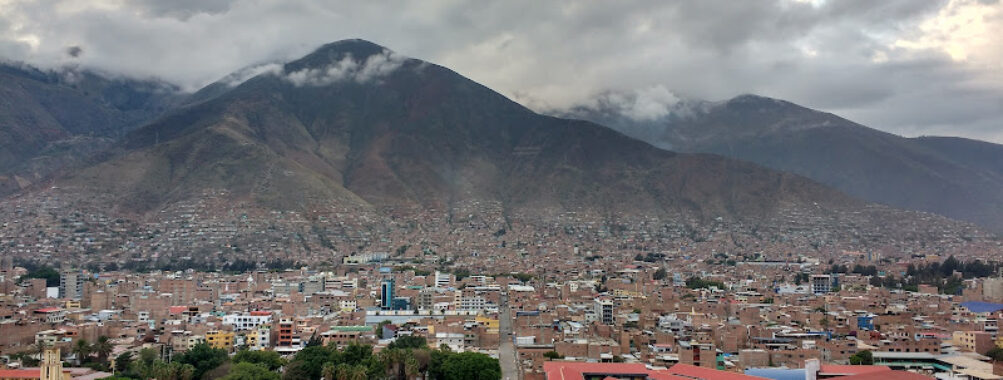
Cultural Bicentenario de Huanuco Park
Table of Contents
Description
The Cultural Bicentenario de Huánuco Park is more than just a green space – it’s a living tribute to Peru’s 200 years of independence, thoughtfully designed to reflect the soul of the Huánuco Valley. The layout is inspired by the three iconic hills that dominate the local skyline: Marabamba, Paucarbamba, and Rondos. Each section feels like a small world of its own, with open lawns, cultural monuments, and art installations that tell stories you might not find in guidebooks. It’s the kind of place where you can take your time – wander, sit, people-watch – and really feel the rhythm of the city.
Travelers often remark on the park’s sense of openness, which makes it a favorite for families, couples, and solo wanderers alike. You can bring the kids without worrying about space for them to run around, and yes, your dog is welcome too. Accessibility has clearly been considered here – the paths are wide and smooth, so wheelchair users and strollers can move around without hassle. And yet, despite being so central and easy to reach, it doesn’t feel overly crowded most of the time. You might catch a local dance rehearsal, a weekend artisan market, or just the everyday hum of Huánuco life unfolding around you.
Personally, I think what makes this park stand out is how it blends the symbolic with the practical. It’s commemorative without being stiff, and it’s functional without losing its cultural depth. I’ve sat here with a coffee in the late afternoon, watching the light change over the hills, and it’s one of those moments that stays with you. It’s not flashy, but it’s genuine – and that’s a rare thing in tourist spots these days.
Key Features
- Three thematic zones representing the hills of Marabamba, Paucarbamba, and Rondos
- Wheelchair-accessible paths and entrances
- Open lawns perfect for picnics, casual sports, or relaxing under the sun
- Pet-friendly policy allowing dogs on leashes
- Spaces for cultural events, performances, and community gatherings
- Public art installations and commemorative monuments
- Shaded seating areas for rest and conversation
- Play areas suitable for children
Best Time to Visit
If you want to catch the park at its most photogenic, aim for the dry season – roughly May through September – when the skies are crisp blue and the air feels lighter. Mornings are wonderfully calm, with fewer people and that cool Andean freshness that makes walking around a pleasure. Late afternoons can be magical too, especially when the golden light hits the surrounding hills. That said, if you’re into cultural events, keep an eye out for national holidays or local festivals; the park often becomes a hub for music, dance, and food stalls during these times. Just be ready for bigger crowds and a livelier atmosphere.
In the rainy season (October to April), you’ll still find plenty to enjoy, but bring a light rain jacket or umbrella. The showers tend to be short, and the greenery is at its lushest. Personally, I don’t mind the occasional drizzle – it gives the place a fresh, earthy scent and keeps the air cool.
How to Get There
Getting to the Cultural Bicentenario de Huánuco Park is straightforward, whether you’re already in the city or arriving from nearby towns. Most visitors simply take a short taxi or rideshare from the main plaza, which usually costs just a few soles. If you’re feeling adventurous, you can hop on one of the local colectivos (shared taxis) that pass near the park – it’s a more authentic way to experience daily life here, though it can get a bit cramped during peak hours.
If you’re walking from the city center, it’s a pleasant stroll that lets you take in Huánuco’s street life and small shops along the way. The park’s entrances are well-marked, and you’ll likely hear the sounds of laughter or music before you even see the gates. For those driving, there’s usually street parking nearby, but spaces can be limited during events or weekends.
Tips for Visiting
First thing – bring a hat or sunscreen. The Andean sun can be surprisingly strong, even if the air feels cool. And if you’re planning to stay a while, pack some water and maybe a snack; there are vendors around, but it’s nice to have your own supplies if you want to settle in for a long, lazy afternoon.
If you’re traveling with kids, the play areas are safe and well-maintained, but it’s still a good idea to keep an eye on them, especially during busier hours. Dog owners should bring a leash and a few waste bags – locals are friendly, but they appreciate responsible pet care. For photographers, mornings and late afternoons offer the best natural light, and you’ll get fewer people in your shots.
One thing I’ve learned from my own visits: don’t rush. The park isn’t a place you “check off” in 20 minutes. It’s better enjoyed slowly – maybe start with a walk through each of the three zones, then find a bench and just watch life happen. You might overhear a conversation in Quechua, see a group of teens practicing traditional dance, or catch the smell of fresh anticuchos from a nearby vendor. These little moments are what make the experience stick with you long after you’ve left.
Lastly, if you’re in Huánuco during a major holiday, absolutely swing by. The park transforms into a living stage, buzzing with music, color, and local pride. It’s the kind of energy that photos can’t fully capture, but you’ll remember it for years.
Location
Places to Stay Near Cultural Bicentenario de Huanuco Park
Find and Book a Tour
Explore More Travel Guides
No reviews found! Be the first to review!